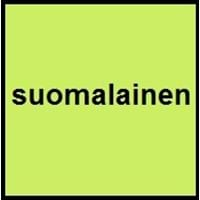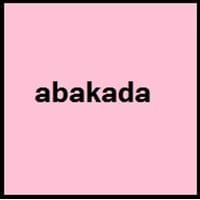Finnish vs Tagalog
Countries
European Union, Finland
Philippines
National Language
Estonia, Finland, Norway, Russia, Sweden
Philippines
Second Language
Estonia
Filipinos
Speaking Continents
Asia, Europe
Asia, Australia
Minority Language
Republic of Karelia, Russian Federation, Sweden
Australia, Canada, Guam, Hong Kong, New Zealand, Singapore, United Kingdom
Regulated By
Institute for the Languages of Finland
Komisyon sa Wikang Filipino, National Languages Committee
Interesting Facts
- Finnish language has adopted many words from Iranian, Turkic, Baltic, Germanic and Slavic languages.
- In Finnish language, there are no articles or grammatical gender.
- In 1593, "Doctrina Christiana" was first book written in two versions of Tagalog.
- The name "Tagalog" means "native to" and "river". "Tagalog"is derived from taga ilog, which means "inhabitants of the river".
Similar To
Estonian and Livonian Languages
Filipino, Cebuano and Spanish Languages
Derived From
Not Available
Not Available
Alphabets in
Finnish-Alphabets.jpg#200
Tagalog-Alphabets.jpg#200
Writing Direction
Left-To-Right, Horizontal
Left-To-Right, Horizontal
Thank You
Kiitos
Salamat po
How Are You?
Mitä kuuluu?
Kamusta ka na?
Good Night
hyvää yötä
Magandang gabi
Good Evening
Hyvää iltaa
Magandang gabi po
Good Afternoon
Hyvää iltapäivää
Magandang hapon po
Good Morning
Hyvää huomenta
Magandang umaga po
Sorry
Anteeksi
pinagsisisihan
I Love You
Minä rakastan sinua
Iniibig kita
Excuse Me
Anteeksi
Ipagpaumanhin ninyo ako
Dialect 1
Colloquial Finnish
Batangas Tagalog
Where They Speak
Finland
Batangas, Gabon
Where They Speak
Finland, Rauma
Philippines
Dialect 3
Meänkieli
Filipino
Where They Speak
Finland, Sweden
Philippines
Speaking Population
Not Available
Native Name
suomi / suomen kieli
Tagalog
Alternative Names
Suomi
Filipino, Pilipino
French Name
finnois
tagalog
German Name
Finnisch
Tagalog
Pronunciation
[ˈsuomi]
[tɐˈɡaːloɡ]
Ethnicity
ethnic Finns
Tagalog people
Language Family
Uralic Family
Austronesian Family
Subgroup
Finno-Ugric
Indonesian
Branch
Finnic
Not Available
Early Forms
Proto-Finnic language
Proto-Philippine, Old Tagalog, Classical Tagalog, Tagalog
Standard Forms
standard Finnish
Filipino
Language Position
Not Available
Signed Forms
Signed Finnish
Not Available
Scope
Individual
Individual
ISO 639 6
Not Available
Not Available
Glottocode
finn1318
taga1269
Linguasphere
No data available
31-CKA
Language Type
Living
Living
Language Linguistic Typology
Subject-Verb-Object
Object-Verb-Subject, Subject-Verb-Object, Verb-Object-Subject, Verb-Subject-Object
Language Morphological Typology
Agglutinative, Synthetic
Not Available
Finnish and Tagalog Language History
Comparison of Finnish vs Tagalog language history gives us differences between origin of Finnish and Tagalog language. History of Finnish language states that this language originated in 1543 whereas history of Tagalog language states that this language originated in 1593. Family of the language also forms a part of history of that language. More on language families of these languages can be found out on Finnish and Tagalog Language History.
Finnish and Tagalog Greetings
People around the world use different languages to interact with each other. Even if we cannot communicate fluently in any language, it will always be beneficial to know about some of the common greetings or phrases from that language. This is where Finnish and Tagalog greetings helps you to understand basic phrases in Finnish and Tagalog language. Finnish word for "Hello" is Moi or Tagalog word for "Thank You" is Salamat po. Find more of such common Finnish Greetings and Tagalog Greetings. These greetings will help you to be more confident when conversing with natives that speak these languages.
Finnish vs Tagalog Difficulty
The Finnish vs Tagalog difficulty level basically depends on the number of Finnish Alphabets and Tagalog Alphabets. Also the number of vowels and consonants in the language plays an important role in deciding the difficulty level of that language. The important points to be considered when we compare Finnish and Tagalog are the origin, speaking countries, language family, different greetings, speaking population of these languages. Want to know in Finnish and Tagalog, which language is harder to learn? Time required to learn Finnish is 44 weeks while to learn Tagalog time required is 44 weeks.





